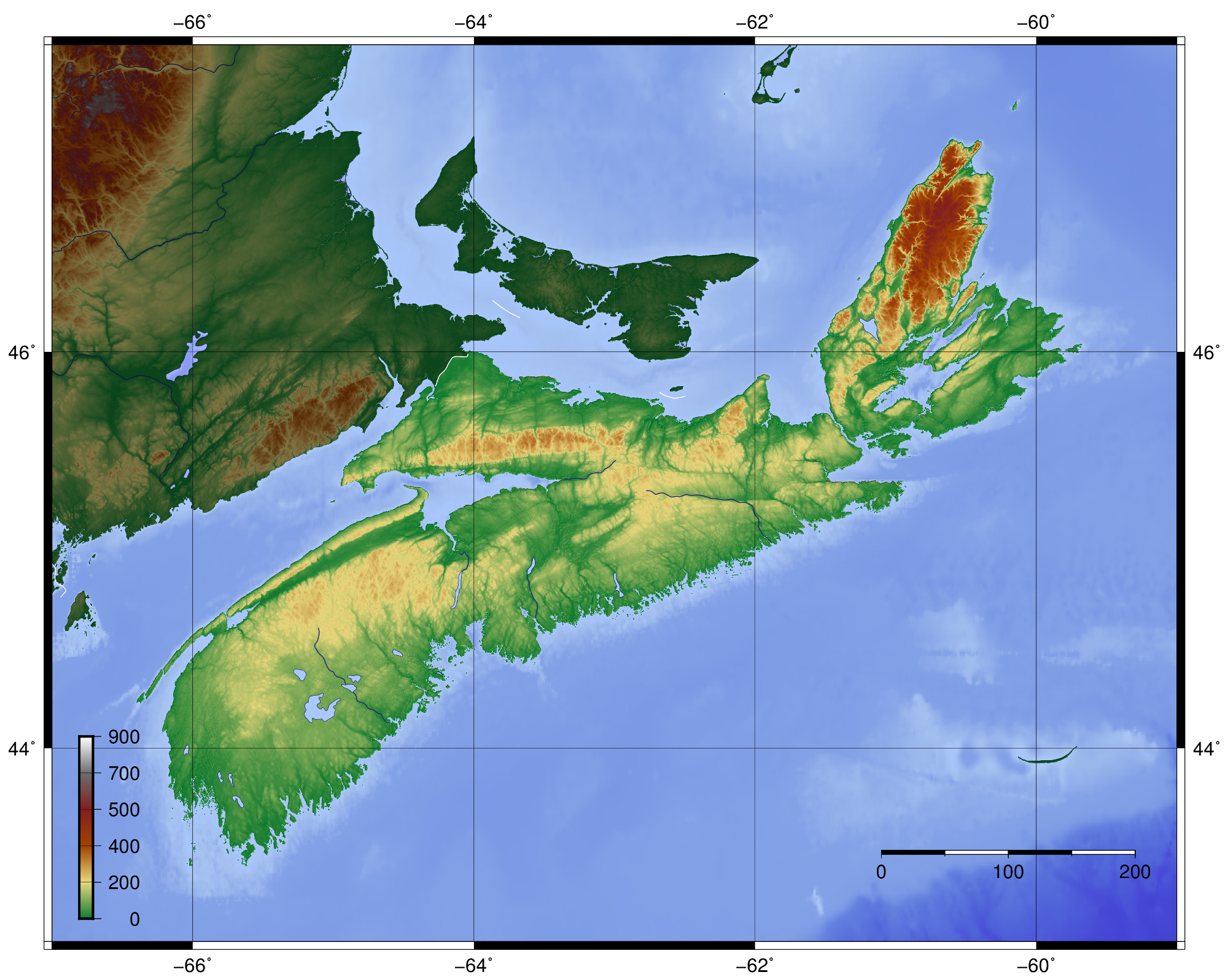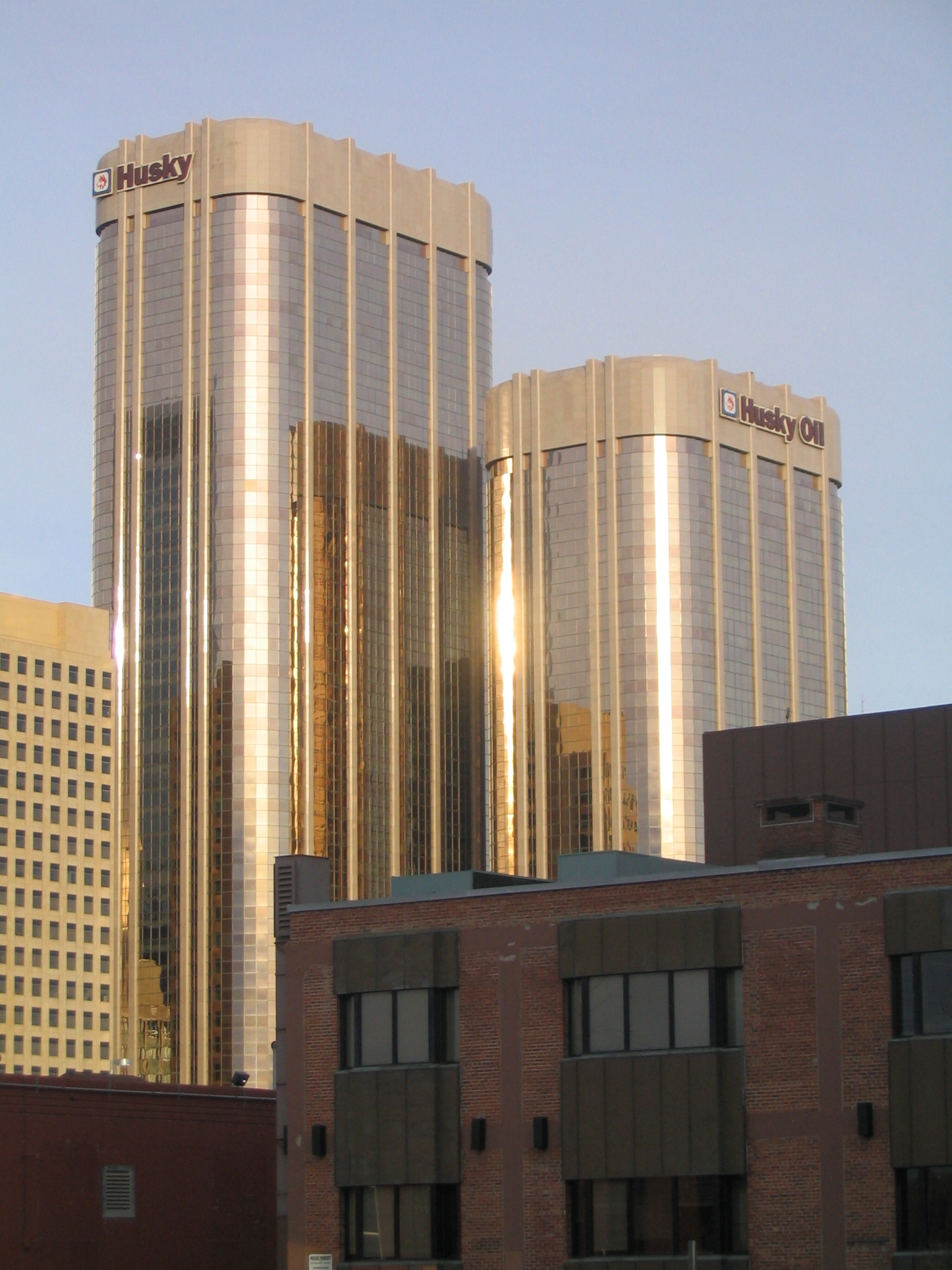|
BP Canada
BP Canada was a Canadian petroleum company and subsidiary of British Petroleum that operated between 1955 and 1992. The name refers to a group of companies that engaged in various segments of the petroleum industry lifecycle. BP entered the Canadian market in October 1953 when it purchased a 23 percent stake in the Triad Oil Company. In 1955, BP formed a Canadian subsidiary, based in Montreal, called BP Canada Limited. The company began acquiring retail stations in Ontario and Quebec and in 1957 started construction on a refinery in Montreal. By the end of the 1950s BP Canada was a fully-integrated operation. In 1964 it acquired from Cities Service the Oakville Refinery, and then expanded its operations significantly in 1971 when it acquired Supertest Petroleum. In 1982, BP sold its refining and marketing assets for $577 million to the crown corporation Petro-Canada. The remaining upstream operations were organised into an independent exploration and production company. The compan ... [...More Info...] [...Related Items...] OR: [Wikipedia] [Google] [Baidu] |
Petroleum Industry
The petroleum industry, also known as the oil industry or the oil patch, includes the global processes of hydrocarbon exploration, exploration, extraction of petroleum, extraction, oil refinery, refining, Petroleum transport, transportation (often by oil tankers and pipeline transport, pipelines), and marketing of list of crude oil products, petroleum products. The largest volume products of the industry are fuel oil and gasoline (petrol). Petroleum is also the raw material for many petrochemical, chemical products, including pharmaceutical drug, pharmaceuticals, solvents, fertilizers, pesticides, synthetic Aroma compound, fragrances, and plastics. The industry is usually divided into three major components: upstream (petroleum industry), upstream, midstream, and downstream (petroleum industry), downstream. Upstream regards exploration and extraction of Petroleum, crude oil, midstream encompasses transportation and Oil terminal, storage of crude, and downstream concerns refining ... [...More Info...] [...Related Items...] OR: [Wikipedia] [Google] [Baidu] |
Panarctic Oils
Panarctic Oils Limited was formed in 1966 as a result of the Canadian government's eagerness to encourage exploration of the Canadian Arctic islands and to assert Canadian sovereignty in the region. That company consolidated the interests of 75 companies and individuals with Arctic Islands land holdings plus the Federal government as the major shareholder. It played an important part in the development of the petroleum industry in Canada. History The company had a long and complicated birth. When the deal was complete in 1968, the Federal government held 45% of the new company's equity. Panarctic marked the Federal government's first direct entry into the oil and gas business, except for a brief period of involvement during World War II. After its formation, the company became the principal oil and gas operator in the Arctic Islands. In 1976, the federal government transferred its stake to Petro-Canada who later raised its stake to 53%. Exploration In that role it spent so ... [...More Info...] [...Related Items...] OR: [Wikipedia] [Google] [Baidu] |
Nova Scotia
Nova Scotia ( ; ; ) is one of the thirteen provinces and territories of Canada. It is one of the three Maritime provinces and one of the four Atlantic provinces. Nova Scotia is Latin for "New Scotland". Most of the population are native English-speakers, and the province's population is 969,383 according to the 2021 Census. It is the most populous of Canada's Atlantic provinces. It is the country's second-most densely populated province and second-smallest province by area, both after Prince Edward Island. Its area of includes Cape Breton Island and 3,800 other coastal islands. The Nova Scotia peninsula is connected to the rest of North America by the Isthmus of Chignecto, on which the province's land border with New Brunswick is located. The province borders the Bay of Fundy and Gulf of Maine to the west and the Atlantic Ocean to the south and east, and is separated from Prince Edward Island and the island of Newfoundland (island), Newfoundland by the Northumberland Stra ... [...More Info...] [...Related Items...] OR: [Wikipedia] [Google] [Baidu] |
Northwest Territories
The Northwest Territories (abbreviated ''NT'' or ''NWT''; french: Territoires du Nord-Ouest, formerly ''North-Western Territory'' and ''North-West Territories'' and namely shortened as ''Northwest Territory'') is a federal territory of Canada. At a land area of approximately and a 2016 census population of 41,790, it is the second-largest and the most populous of the three territories in Northern Canada. Its estimated population as of 2022 is 45,605. Yellowknife is the capital, most populous community, and only city in the territory; its population was 19,569 as of the 2016 census. It became the territorial capital in 1967, following recommendations by the Carrothers Commission. The Northwest Territories, a portion of the old North-Western Territory, entered the Canadian Confederation on July 15, 1870. Since then, the territory has been divided four times to create new provinces and territories or enlarge existing ones. Its current borders date from April 1, 1999, when t ... [...More Info...] [...Related Items...] OR: [Wikipedia] [Google] [Baidu] |
Alberta
Alberta ( ) is one of the thirteen provinces and territories of Canada. It is part of Western Canada and is one of the three prairie provinces. Alberta is bordered by British Columbia to the west, Saskatchewan to the east, the Northwest Territories (NWT) to the north, and the U.S. state of Montana to the south. It is one of the only two landlocked provinces in Canada (Saskatchewan being the other). The eastern part of the province is occupied by the Great Plains, while the western part borders the Rocky Mountains. The province has a predominantly continental climate but experiences quick temperature changes due to air aridity. Seasonal temperature swings are less pronounced in western Alberta due to occasional Chinook winds. Alberta is the fourth largest province by area at , and the fourth most populous, being home to 4,262,635 people. Alberta's capital is Edmonton, while Calgary is its largest city. The two are Alberta's largest census metropolitan areas. More than ... [...More Info...] [...Related Items...] OR: [Wikipedia] [Google] [Baidu] |
Devon Energy
Devon Energy Corporation is an energy company engaged in hydrocarbon exploration in the United States. It is organized in Delaware and its corporate operative headquarters are in the 50-story Devon Energy Center in Oklahoma City, Oklahoma. Its primary operations are in the Barnett Shale STACK formation in Oklahoma, Delaware Basin, Eagle Ford Group, and the Rocky Mountains. The company is ranked 520th on the Fortune 500. It is not on the Forbes Global 2000. As of December 31, 2021, the company had proved reserves of , of which 44% was petroleum, 27% was natural gas liquids, and 29% was natural gas. History Devon was founded in 1971 by John Nichols and his son, J. Larry Nichols. In 1988, the company became a public company via an initial public offering. In August 2000, the company was added to the S&P 500. In 2004, Devon was one of several companies in the petroleum industry for which shareholder resolutions were introduced that would have required the companies to monitor ... [...More Info...] [...Related Items...] OR: [Wikipedia] [Google] [Baidu] |
Husky Energy
Husky Energy Inc. is a company engaged in hydrocarbon exploration, headquartered in Calgary, Alberta, Canada. It operates in Western and Atlantic Canada, the United States and the Asia Pacific region, with upstream and downstream business segments. In the 2020 Forbes Global 2000, Husky Energy was ranked as the 1443rd-largest public company in the world. In 2020, the company agreed to be acquired by Cenovus Energy. The deal closed in January 2021 and Husky became a subsidiary of Cenovus. History Husky Energy was founded in 1938 in Cody, Wyoming as the Husky Refining Company, with the acquisition by Glenn Nielsen of assets of the 4-year-old Park Refining Company from founder Valentine Monroe Kirk. The first refinery was in Cody, with a second constructed later in Riverton, Wyoming. In 1946, the Company relocated to Canada, with the Riverton refinery moved to Lloydminster, Alberta to take advantage of the expanding asphalt and heavy oil opportunities in the area. A wholly-owne ... [...More Info...] [...Related Items...] OR: [Wikipedia] [Google] [Baidu] |
Oil Sands
Oil sands, tar sands, crude bitumen, or bituminous sands, are a type of unconventional petroleum deposit. Oil sands are either loose sands or partially consolidated sandstone containing a naturally occurring mixture of sand, clay, and water, soaked with bitumen, a dense and extremely viscous form of petroleum. Significant bitumen deposits are reported in Canada, Kazakhstan, Russia, and Venezuela. The estimated worldwide deposits of oil are more than ; the estimates include deposits that have not been discovered. Proven reserves of bitumen contain approximately 100 billion barrels, and total natural bitumen reserves are estimated at worldwide, of which , or 70.8%, are in Alberta, Canada. Crude bitumen is a thick, sticky form of crude oil, so viscous that it will not flow unless heated or diluted with lighter hydrocarbons such as light crude oil or natural-gas condensate. At room temperature, it is much like cold molasses. The Orinoco Belt in Venezuela is sometimes des ... [...More Info...] [...Related Items...] OR: [Wikipedia] [Google] [Baidu] |
Repsol
Repsol S.A. El Nuevo Herald, 2012-05-31Originally an initialism for ''Refinería de Petróleos de '' adding the word ''Sol'' (Sun) () is a Spanish multinational energy and petrochemical company based in . It is engaged in worldwide upstream and downstream activities. In the 2021 |
Eric Harvie
Eric Lafferty Harvie (2 April 1892 – 11 January 1975) was a Canadian lawyer and oilman. Holding mineral rights to large quantities of land in the Edmonton area, Harvie made a fortune after the oil discoveries at Leduc in 1947 and Redwater in 1948. After 1955 Harvie devoted himself primarily to cultural and philanthropic endeavors. He is best remembered as the founder of the Glenbow Museum and Devonian Gardens in Calgary, which opened in 1966. Biography Early life and education Eric Lafferty Harvie was born on 2 April 1892 in a house located at 136 Matchedash Street in Orillia, Ontario to William Mcleod Harvie and Elizabeth Cecile "Cicely" Lafferty. Eric was the fourth of five children, Alan, Ruth, and Jean his elders, and Dane his junior. William Harvie (1856-1919) was a dentist in Orilli a who served as they town mayor from 1891 to 1892, and Cicely Harvie (1859-1940) was a school teacher. Eric Harvie was a fourth-generation Canadian. His great grandfather, John Harv ... [...More Info...] [...Related Items...] OR: [Wikipedia] [Google] [Baidu] |
Caisse De Dépôt Et Placement Du Québec
Caisse de dépôt et placement du Québec (CDPQ; ) is an institutional investor that manages several public and parapublic pension plans and insurance programs in Quebec. CDPQ was founded in 1965 by an act of the National Assembly, under the government of Jean Lesage. It is the second-largest pension fund in Canada, after the Canada Pension Plan Investment Board. As of June 30, 2022, CDPQ managed assets of C$391 billion, invested in Canada and elsewhere. CDPQ is headquartered in Quebec City at the Price building and has its main business office in Montreal at Édifice Jacques-Parizeau. History The Caisse de dépôt et placement du Québec was established on July 15, 1965, by an Act of Québec's National Assembly to manage the funds of the Quebec Pension Plan, a public pension plan also created by the Québec government. In the years following, CDPQ was entrusted with managing the funds of other public pension and insurance plans: the Supplemental Pension Plan for Employees ... [...More Info...] [...Related Items...] OR: [Wikipedia] [Google] [Baidu] |
First Canadian Place
First Canadian Place (originally First Bank Building) is a skyscraper in the Financial District of Toronto, Ontario, at the northwest corner of King and Bay streets, and serves as the global operational headquarters of the Bank of Montreal. At , it is Canada's tallest skyscraper and the 15th tallest building in North America to structural top (spires) and 9th highest to the rooftop, and the 105th tallest in the world. It is the third tallest free-standing structure in Canada, after the CN Tower (also in Toronto) and the Inco Superstack chimney (projected to be demolished) in Sudbury, Ontario. The building is owned by Manulife Financial Corporation (50 per cent) in addition to a private consortium of investors including CPP Investments. The building is managed by Brookfield Properties. History and architecture First Canadian Place is named for Canada's first bank, the Bank of Montreal. Designed by B+H Architects with Edward Durell Stone as a design consultant, First Canadian Pl ... [...More Info...] [...Related Items...] OR: [Wikipedia] [Google] [Baidu] |





_03.jpg)

